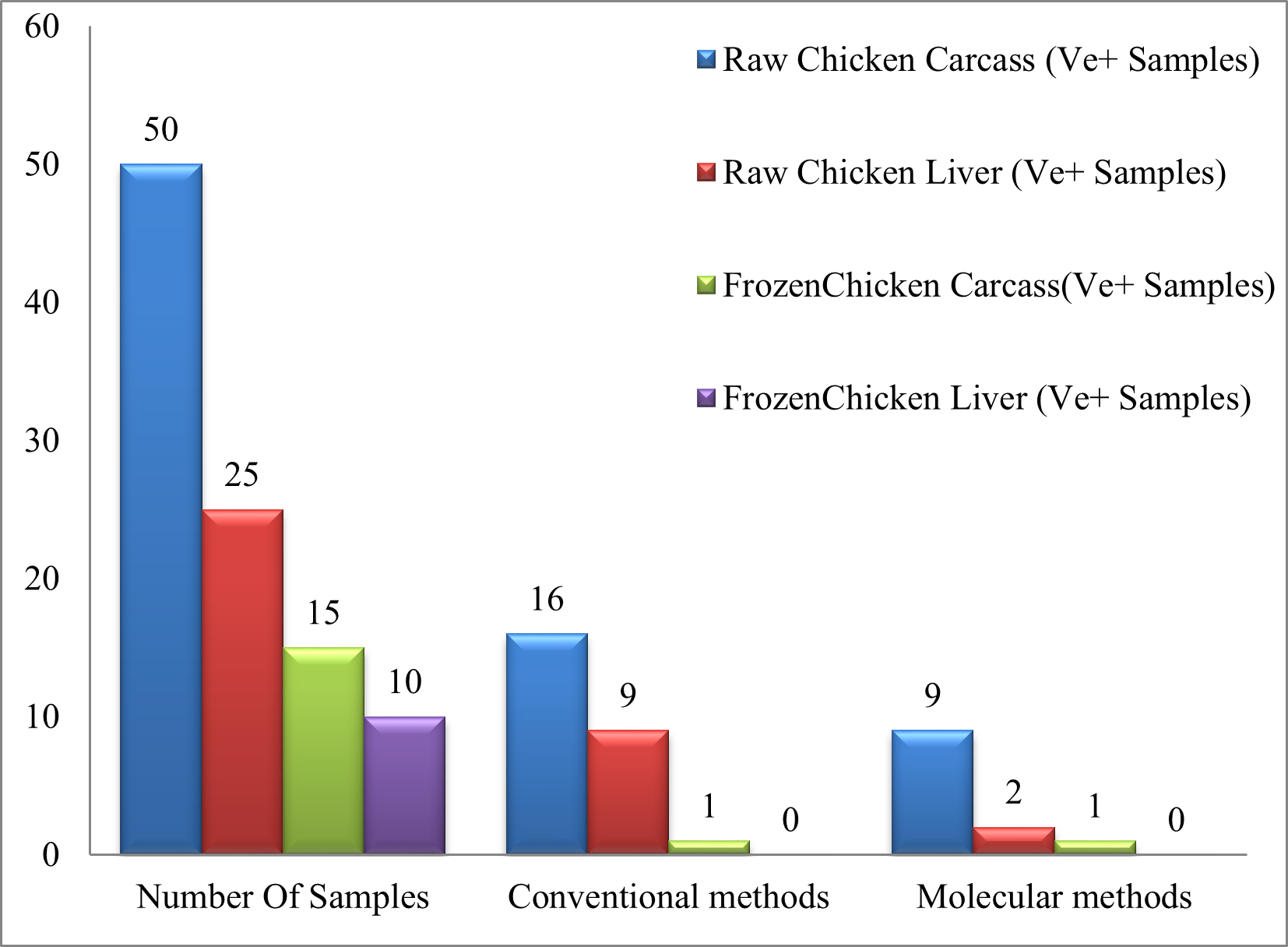Detection of Salmonella in Frozen and Raw Chicken from Islamabad Markets: A Conventional and Molecular Approach
Abstract
 Abstract Views: 0
Abstract Views: 0
Salmonellae are one of the most important foodborne pathogens, worldwide. Foodborne outbreaks associated with the consumption of poultry are very frequent. The detection of this bacterium in chicken products is important to ensure food safety and to protect public health. Most of the current detection techniques, although in widespread use, often give false-positive results; therefore, a more accurate, sensitive, and reliable method for Salmonella detection is needed.Hence, This study estimates the efficiency and effectiveness of conventional and molecular detection techniques in identifying Salmonella spp. in poultry.it also caters the evidence of possible risks associated with the consumption of infected chicken products. For the said purposes,a total of 100 poultry samples comprising carcass and liver were collected from different areas of Islamabad, Pakistan. The positive samples were further analyzed through molecular techniques for the confirmation of the pathogen after these samples had been subjected to the conventional detection techniques. The statistical significance of the outcomes obtained from both the methods was tested in order to compare their effectiveness. Based on the results,, the study concludes that conventional and molecular techniques put together can provide more realistic detection of Salmonella spp. in poultry. The occurrences of false-positive results can be reduced to a minimum when detection is done with the use of selective media that can clearly distinguish Salmonella colonies from other bacteria. The use of such specific media is further encouraged to increase the accuracy of Salmonella detection at different levels of poultry industry.
Downloads

Copyright (c) 2024 Currents in Pharmaceutical Research

This work is licensed under a Creative Commons Attribution 4.0 International License.
Author(s) retain copyright and grant the journal right of first publication with the work simultaneously licensed under a Creative Commons Attribution (CC-BY) 4.0 License that allows others to share the work with an acknowledgment of the work’s authorship and initial publication in this journal.









